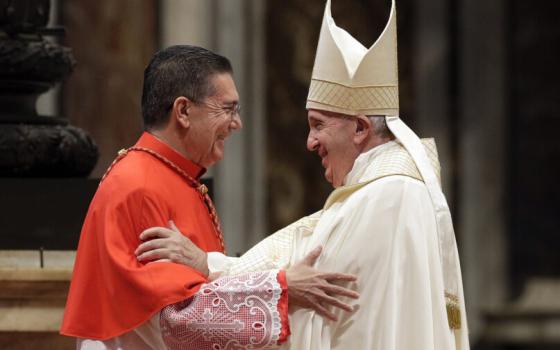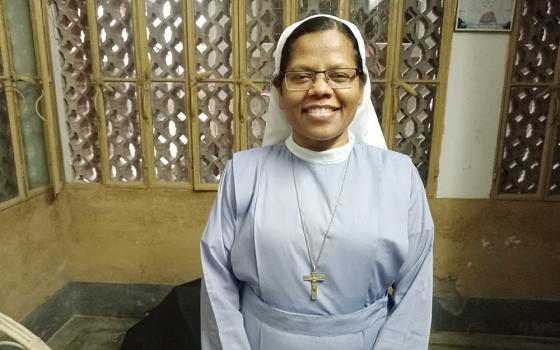John Baldwin’s “Paris, 1200” is a completely different type of history from that contained in the book I last reviewed, Brad Gregory’s “The Unintended Reformation.” Where Gregory engaged a broad sweep of history, tracking the interface of ideas and events over several centuries, Baldwin focuses on one city in one year. Nonetheless, this is an important work not only because the precise focus never leads to a narrative bogged down in minutia, but because so many of the issues considered are as perennial as the New England irises I weeded around this weekend.
Quite striking is the level of moral examination of economic decision-making and commerce that existed in 1200, in some ways more than we witness in our own day. Usury was still considered a sin, although we witness the first attempts to differentiate between permissible extensions of credit and usury per se. Nonetheless, usurers had to pay compensation to their victims (what they called victims we would call credit card holders today) before they could be permitted to donate money to the construction of Notre Dame which was then on-going. Conversely, the canon law at the time stated that “a prostitute acts immorally for what she does, but she does not receive money immorally because she is a prostitute.” She had earned her money. The authorities at Notre Dame did not permit a group of prostitutes to donate money for a special window of their own, but they were permitted to donate to the general construction fund. The next time someone uses the adjective medieval as a slur, you might recall this delicious detail to them: The proceeds of banking were concerned ill-gotten but not those of the ladies of the evening. Far be it from me to suggest that our moral compass has improved in the intervening centuries.
Of course, consideration of usury was frequently tied in with anti-Semitism. In the years 1180-1183, the King enacted a series of anti-Jewish measures, concluding in their expulsion from his lands and his confiscation of their property. Contemporary chronicles indicate that the King was motivated in part by religious reasons but certainly his finances, at first, were not harmed by the confiscation. Over time, however, the finances of the realm suffered and in 1198, King Philip permitted the Jews to return to Paris.
Baldwin provides a magnificent portrayal of a few key figures about whom there is sufficient documentary evidence left to construct an historically accurate picture. Philip the Chanter, a key official at Notre Dame and noted theologian shines through as the kind of exemplary figure our Church has need of in every age. A serious scholar, he produced one of the first full commentaries on the entire canon of scripture, not only on the psalms and the Pauline epistles as many of his contemporaries did. Amongst other of his disciples, we can number Stephen Langton, who would become Archbishop of Canterbury, and Pope Innocent III. Although none of Pierre’s sermons survive, we gain a glimpse of his method through a volume that has survived, the Verbum abbreviatum, which combines scriptural and classical citations with commentary from the Church Fathers and a series of “exempla,” little stories that contained moral themes and which were taken from his lectures and debates in the classroom at the cloister of Notre Dame.
Issues of Church and State come up time and again throughout the text, not least because kings in 1200 were heavily reliant upon clerics to conduct their official business. Clerics were often the most learned men in any given realm, and the Parisian schools produced scholars who were in demand throughout Europe. Interestingly, Baldwin points out that while King Philip employed more masters from the schools than had Louis VII, the court of the Anglo-Norman kings was the most heavily dominated by scholars from Paris. As well, the English Kings were far more likely to confer bishoprics on their ecclesiastical employees than was King Philip: only five out of eighty elections of bishops in France were awarded to clerics in the employ of the King.
The most startling religious fact about the year 1200 in Paris was that for much of the year the city was under interdict. The King had taken an almost instant dislike to his queen, and he set her aside and took another. The Pope did not like the arrangement and, after failing to persuade the King to return his queen to her proper place, he placed the Philip’s realms under interdict. Baldwin writes, “Throughout the city the doors to churches and the gates to cemeteries were closed, and the sacraments were withheld from the faithful. Only baptism was administered to the newborn and the consecrated host given to the seriously ill. These draconian measures affected all levels of the clergy and the laity. Regular observance of mass [sic] and confession ceased; the special occasions of confirmation, marriage and the conferring of holy orders were suspended; and the stench of unburied bodies infected the air.” I read those words and imagined many an ultra-montantist salivating at the prospect of the word of the Pontiff having such powerful effect. But the complicatedness of papal relations with local churches was not so easy. A couple of pages later we learn that 13 of the 19 bishops for whom documentary evidence exists declined to publish the papal decree and never enforced the interdict. In the end, the King took his wife back into the realm, though not to his bed, and the Pope legitimated the two children born of the King’s second union.
The quality of the bishops was a central concern of both the Church and the King. Philip asked Pierre the Chanter why there were so few saints among the episcopacy, compared to the days of old. Pierre replied that previously, before the election of a bishop, the canons performed days of mortification, fasting and prayer. “In our modern elections, on the contrary,” Pierre said, “ it is not the great wise man but the most stupid mentor, the devil, who arrives without being called, following banquets, drinking parties and secret meetings, convoked by his servants names ‘Pride,’ ‘Shame,’ ‘Anger,’ ‘Simony,’ ‘uncontrolled Ambition’ and others. It follows that he who is chosen by such negotiations does the work of him whose counsel has been accepted, living in pride, greed, exaltation and pomp. Such a life is survived not only by a wicked death but also by the maledictions of his people.”
Thomas Becket was a great favorite with the clergy, not least because they were keen to preserve their clerical privileges and immunities. Clerics could not be tried in civil courts. It was considered a heinous crime to strike a cleric, although this provision ran into some confusion when one cleric struck another during the revelries of the great feast days. There was some debate about how to handle clerics who committed outrageous crimes. If they were defrocked, could they then be turned over to the civil authorities for punishment? Did this not amount to a kind of double jeopardy, inflicting two penalties for the same crime? Such debates were taken seriously and they mirror those in our own day as in the upcoming trial of Bishop Robert Finn in civil court. One of the lessons of the medieval era was clear: If the clergy did not police their own, the civil authorities would demand a lessening of clerical immunity.
The turn of the 12th century also witnessed struggles between the rival jurisdictions of bishops and religious orders. Sound familiar? Bishop Maurice de Sully was unable to assert control over certain religious orders, as when he tried to deny the parochial rights of the Abbey of Saint-Genevieve over the parish of Saint-Jean-du-Mont on the Left Bank. The effort came to naught. The pride of the religious houses showed themselves in other ways as well. In 1163, at the consecration of the new buildings of Saint-Germain-des-Pres, buildings still visible today, Bishop Maurice showed up wearing his bishop’s miter, and was excluded from the ceremony because on the abbot was permitted to wear the miter within the abbey.
One passage of Baldwin’s work I especially wish to commend to my readers as we contemplate the many struggles within our Church today. He writes: “Although the bishop and the [cathedral] chapter might cooperate or compete over the cathedral, in the fullest sense Notre-Dame belonged not to them but to the saints, and most particularly to its supreme patroness, the Blessed Virgin Mary.” Perhaps some of the “struggles” in the Church today might be better resolved if, instead of contrasting “the hierarchic Church” or the “official Church” with the “people of God,” we all remembered that the Church belongs to the saints. It belongs to the saints of our own time, the people who feed the hungry and shelter the homeless and visit the imprisoned and pray for the dead, but also to the saints of the past. Our sense of sanctity today is diminished when it is reduced to modern ideas of social service, robbed of its integral religious motivation. Our sense of the sanctity of old is diminished, too, if it is seen as the kind of tradition one keeps on the mantle, to be dusted once a week, and spoken of fondly, but not to be renewed in the here and now. It is not just the church building that belongs to the saints. It is the Church, the one Church, the Church of the hierarchy and the Church of the people of God.
Note to Readers: About to jump into the car with the three dogs for the drive up to Connecticut. So, no posting for the rest of the day. Check back in tomorrow when we will have a preview of the USCCB summer meeting.



